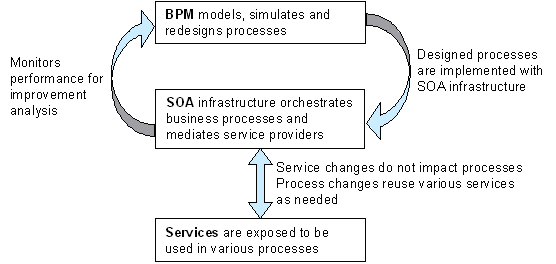Two or three years ago, when I began speaking at BrainStorm BPM conferences, I coined the term “BPM 2.0” to refer to new tools that allowed “process without programming.” That technology, featuring integration adapters that could introspect enterprise information systems and turn them magically into “services” ready for orchestration in a business process, was the beginning of the convergence of SOA and BPM. Looking back now, however, I think a better term might have been BPM 1.1, or “integration without programming.” Today it’s safe to say that not everyone i


















